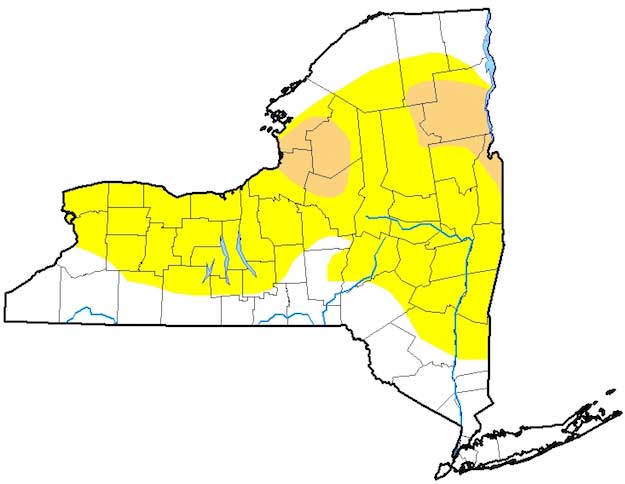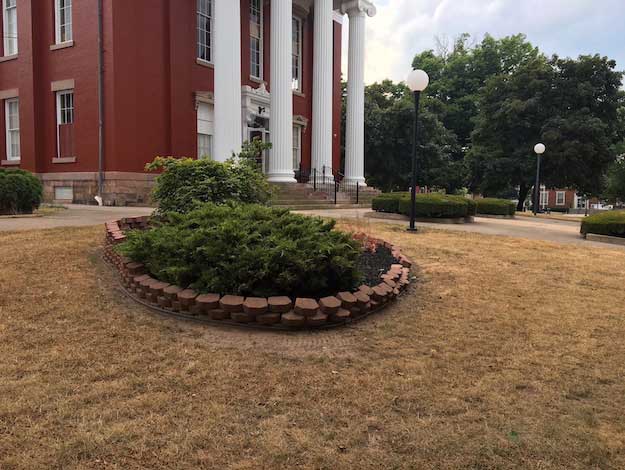Lack of rain is hurting local crops, turning lawns yellow
The lack of rain the past month is already taking a toll on local crops and farmers fear their yields will be down.
Corn is already starting to tassel even though the plants are only 4 to 5 feet tall. Normally the plants are 8 to 9 feet high when they start to tassel, said Larry Meyer, director of the Farm Service Agency in Albion.
“The plants are stunted and yields will be down,” he said.
Orleans County is the state’s second-leading apple producer behind Wayne County. This is normally the time when the fruit starts to put on size, but without rain the fruit will be undersized, with smaller yields and less revenue for the farmers.
Orleans County is officially “abnormally dry,” according to the U.S. Drought Monitor, which last updated the drought map on Thursday. The county has received very little rain since then, unlike neighboring counties.
“It’s pretty critical and we keep missing the rains,” Meyer said this morning.

This map from the United States Drought Monitor shows the majority of New York State is “abnormally dry.” The map was based on data from a week ago and shows 63 percent of state is at least abnormally dry – including 9.3 percent that is in moderate drought.
Orleans was in worse shape two years ago when it was officially in a drought. Meyer said the crop yields were down about 40 percent in 2016.
In mid-July 2016, the State Department of Environmental Conservation issued a drought watch for the entire state, encouraging residents to conserve water due to reduced groundwater levels. That was the first drought watch in New York State since 2002.
Last year there were record levels of moisture, and now the county and region are approaching drought-like conditions.
“We went almost 20 years without being on Drought Monitor,” Meyer said. “Then we had the extreme moisture last year. We’ve never had 3 years like this, back to back to back. It’s not good.”






































































